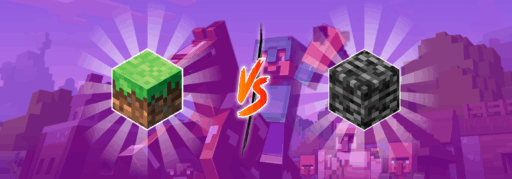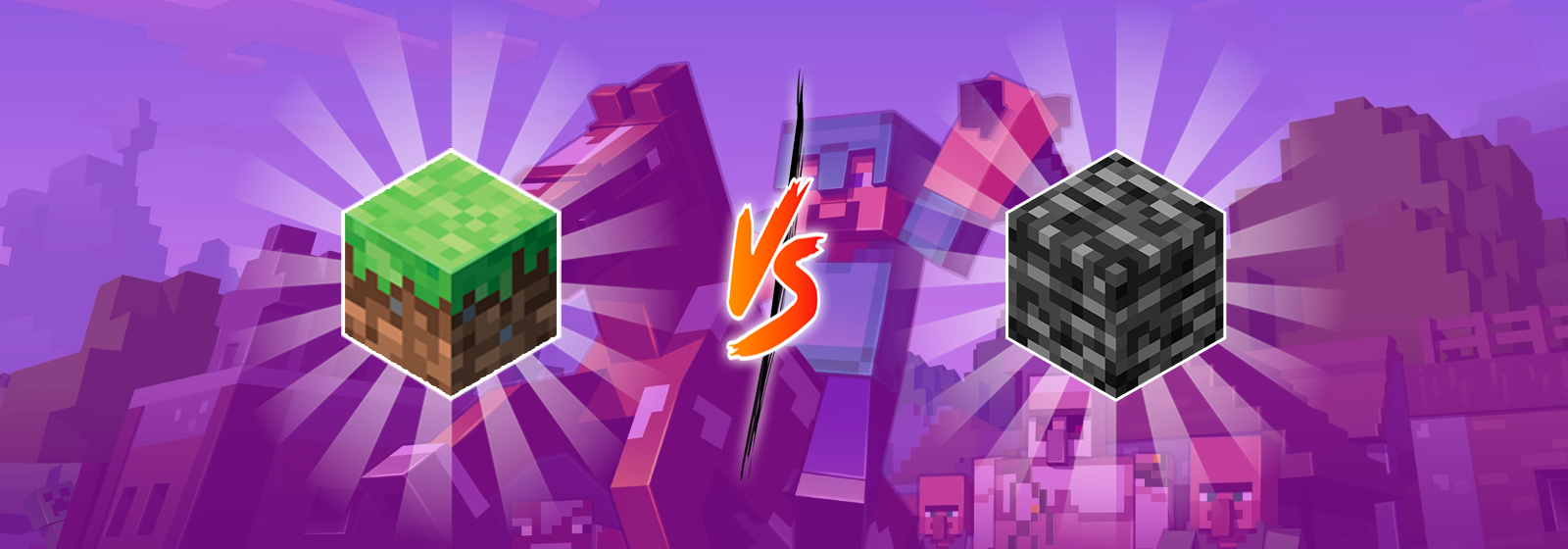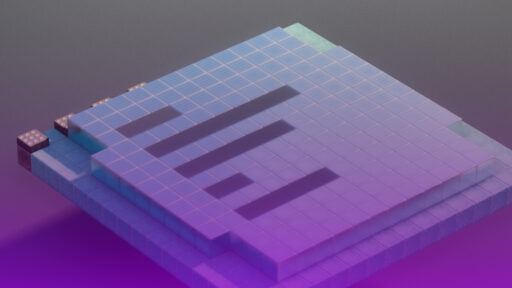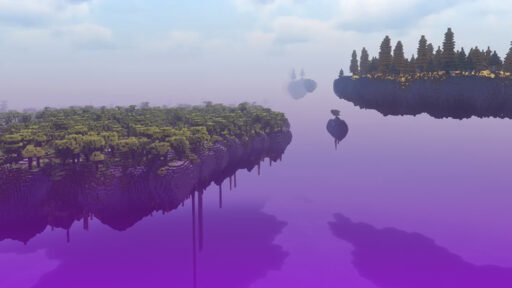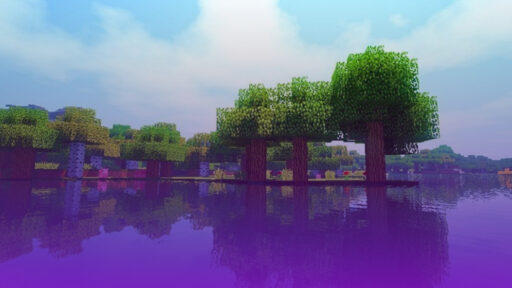Minecraft Java Edition is the name of the original version of Minecraft, released in 2009 for PC, while Minecraft Bedrock Edition (formerly known as Pocket Edition), released in 2011, was created to unify the game across multiple platforms, including mobile devices and consoles.
Although both editions of Minecraft share the same core gameplay, they have notable differences (which we’ll explore soon) that affect the player experience.
The fundamental difference lies in their codebase
There are technical differences between the two main versions of Minecraft, that go beyond simply being available on different platforms. These differences stem from the very core of their development (their programming language).
1. Java Edition
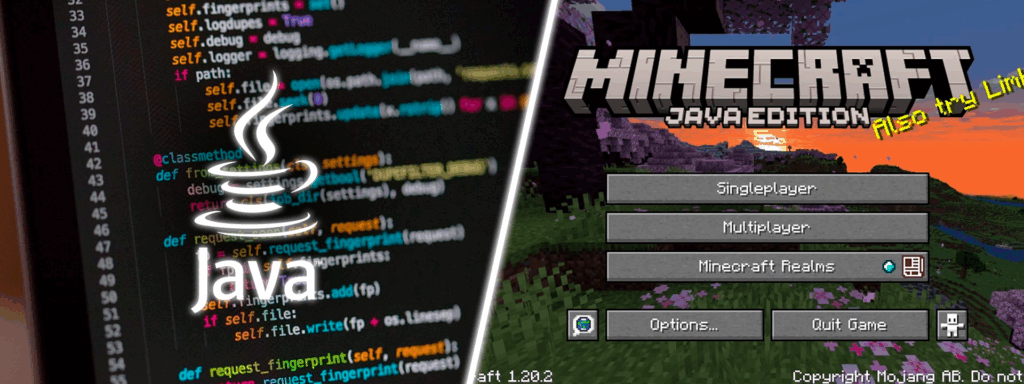
Java Edition, as its name suggests, was developed using the Java programming language. This was the original version of Minecraft created by Markus Persson and Mojang. The use of Java allowed the game to be easily compatible with multiple desktop operating systems, such as Windows, macOS, and Linux.
Java allows for great flexibility in modding, which is why Minecraft has such a massive modding community. However, Java can be more demanding on system resources.
2. Bedrock Edition
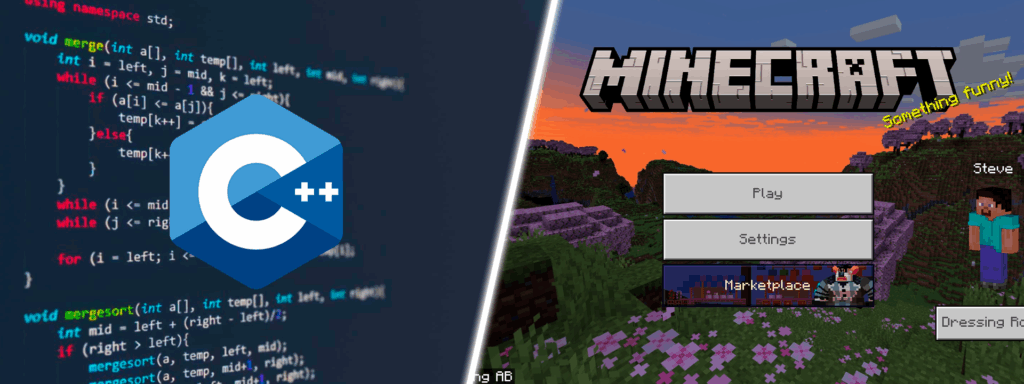
Bedrock Edition is written in C++, a language considered more modern and efficient for game development. Bedrock was developed by Microsoft with the goal of unifying the Minecraft experience under a more versatile codebase, optimized for better performance, especially on devices with more limited hardware, such as consoles and mobile phones.
Bedrock’s optimization typically allows for longer render distances and a more consistent framerate.
Cross-Play
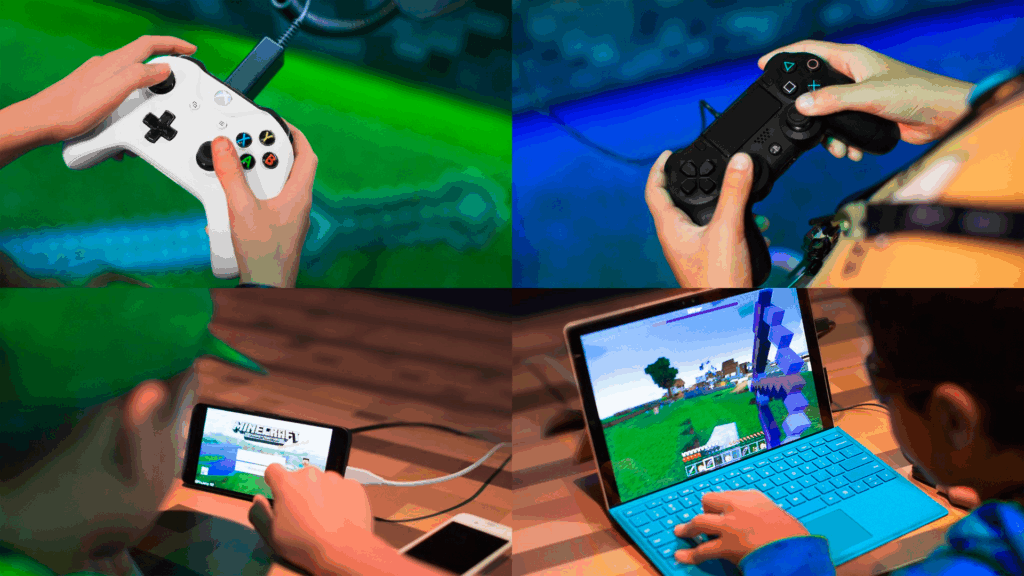
One of the most significant advantages of Bedrock Edition is its support for cross-platform play (cross-play). A player on Xbox can join a Minecraft world hosted by someone playing on a mobile device, Nintendo Switch or PC (the latter only for Windows 10/11 Minecraft versions). This creates a much more connected player ecosystem.
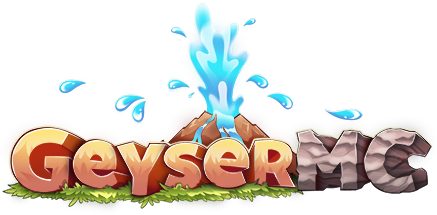
Although official cross-play between Java Edition and Bedrock Edition isn’t currently supported, it can be achieved using Geyser, a free, open-source third-party program that allows Bedrock clients to connect to Java servers.
Multiplayer servers
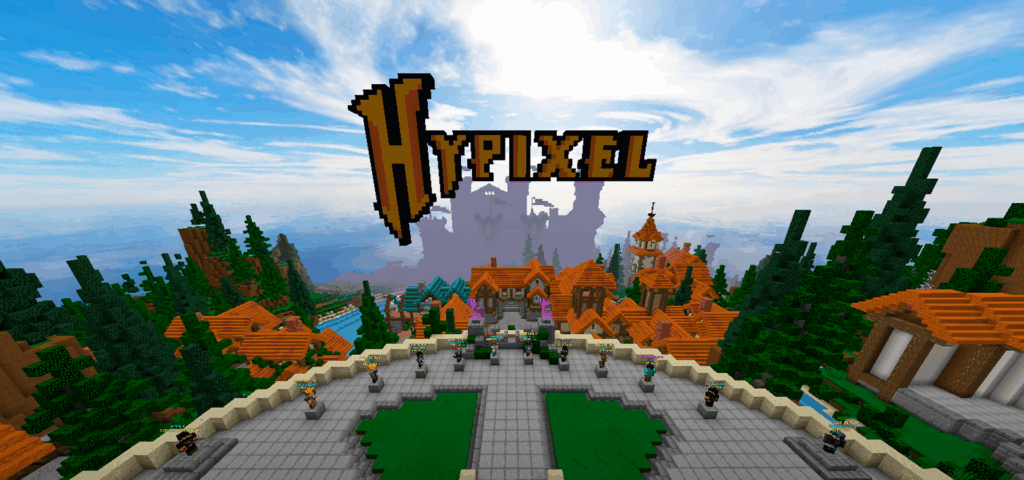
Java Edition is famous for its vast variety of independent community servers. Massive servers like Hypixel or 2b2t are exclusive to this edition, offering minigames and gameplay modes not found elsewhere. Joining a Java server usually requires manually finding and entering the server’s IP address.
Bedrock Edition, on the other hand, features a list of featured servers, such as Lifeboat or Mineplex (official Mojang partners) directly in the game’s menu:
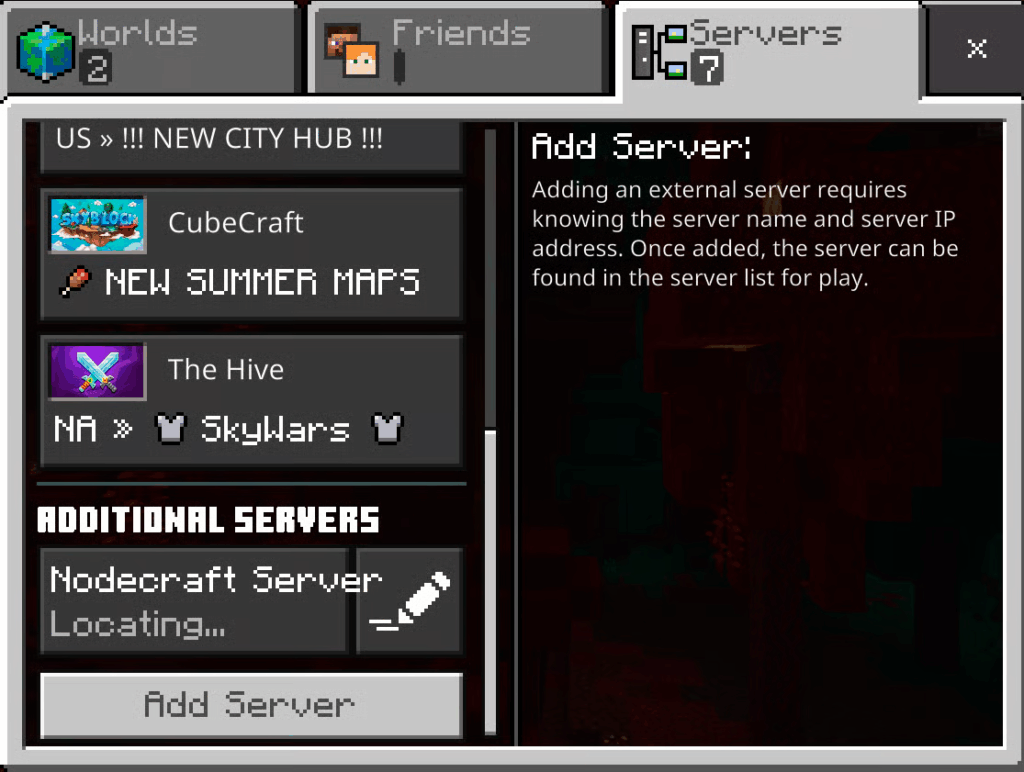
Additionally, Bedrock offers Realms (private servers hosted by Mojang) that make cross-platform play with friends easier. Java also has Realms, but they are limited to players of that edition, because they’re Java-based servers, they only support mods, plugins, and gameplay mechanics specific to Java Edition.
Mods and community content
Java Edition has a massive and advanced modding community, with tools like Forge and Fabric enabling deep game modifications. Players can find everything from small quality of life tweaks to full gameplay overhauls with new dimensions, creatures, and mechanics. Access to this content, including custom skins and maps, is mostly free and managed through community websites.
Bedrock Edition takes a more controlled approach via the Minecraft Marketplace. Here, players can spend Minecoins (an in-game currency purchased with real money) to buy maps, skins, texture packs, and Add-Ons:

Add-Ons are Bedrock’s equivalent of mods, but they are generally less complex and don’t alter the game as drastically as Java mods. While some free content exists, Bedrock’s ecosystem is more transaction-oriented.
Gameplay mechanics differences
1. Redstone
Redstone (Minecraft’s equivalent of electricity) allows players to create circuits, mechanisms, and machines within the game.
In Java Edition, Redstone has more consistent and predictable behavior, allowing for complex and precise circuitry. Mechanics like “quasi-connectivity” (where pistons can be activated by a power source that isn’t directly adjacent) are exclusive to Java and essential for many advanced builds:

Bedrock Edition, however, handles redstone in a way that may feel less predictable to Java players. The absence of “quasi-connectivity” means many Java circuit designs simply don’t work in Bedrock. Additionally, there are minor inconsistencies in component behavior (like pistons), forcing Bedrock players to develop version-specific contraptions.
On the other hand, Bedrock introduces unique features, such as the ability to move container blocks (like chests) with pistons, something impossible in Java.
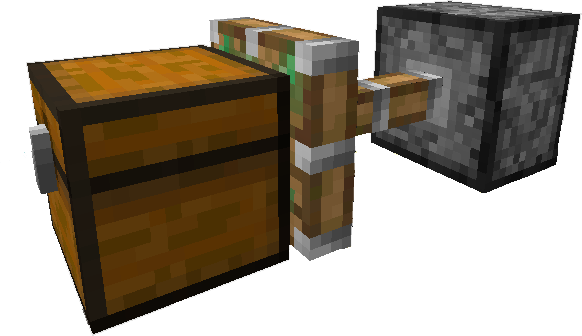
2. Combat
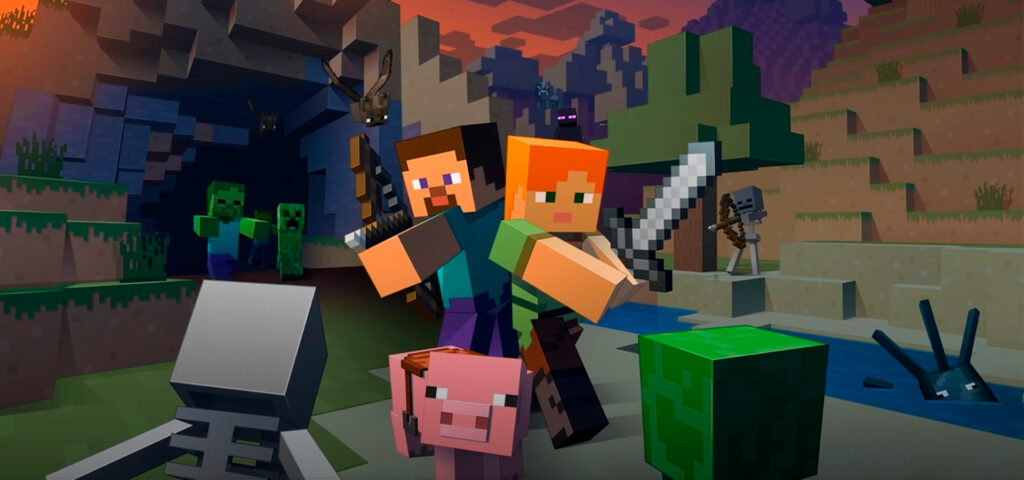
In Java Edition, combat has a more rhythmic approach. After attacking, there is a brief cooldown period during which subsequent attacks deal reduced damage. This encourages more strategic combat, where timing attacks is crucial. Additionally, the sweep attack, which allows players to damage multiple enemies with a single horizontal swing, is a mechanic exclusive to this version.
This is what the cooldown indicator looks like below the crosshair. It’s shaped like a sword, and as it refills with color, it indicates when you can attack again:
In contrast, Bedrock Edition combat is more straightforward and faster. There is no attack cooldown, allowing players to swing continuously at maximum speed. This results in a simpler, more accessible combat system, though some argue it lacks the tactical depth of Java’s cooldown mechanic.
3. World Generation
Although the algorithms for world generation in Java and Bedrock editions have been gradually unified, some differences remain in biome distribution and terrain shape.
A notable distinction is the placement of strongholds:

In Java Edition, strongholds spawn in concentric rings around the world’s origin point. Bedrock Edition, on the other hand, their distribution is more random. Additionally, certain rare structures, such as acacia wood shipwrecks, are more likely to appear in Bedrock.
4. Mob Behavior
The behavior of in-game creatures also has small but notable differences. Drowned in Bedrock have a higher chance of dropping tridents.

Wither Boss, on the other hand, is significantly harder to defeat in Bedrock Edition due to its increased health and ability to spawn Wither Skeletons during the fight. In Java, Wither Skeletons don’t spawn during the battle.
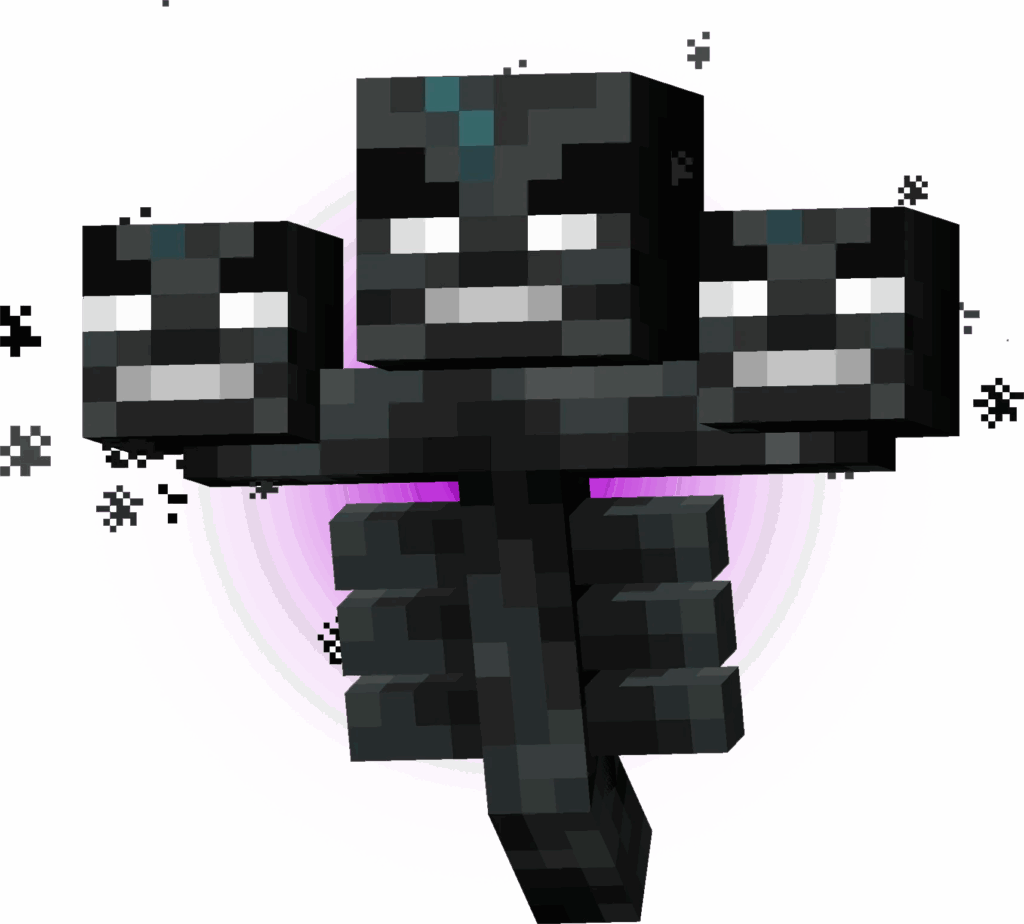
5. Other differences
● In Bedrock Edition cauldrons can hold potions and dyed water in different colors.
● Java Edition allows placing almost any item in the left hand, while Bedrock restricts it to a few items, like maps or shields.
● Java Edition has the full F3 debug menu, crucial for technical players. Bedrock lacks this feature (though it can display coordinates).
